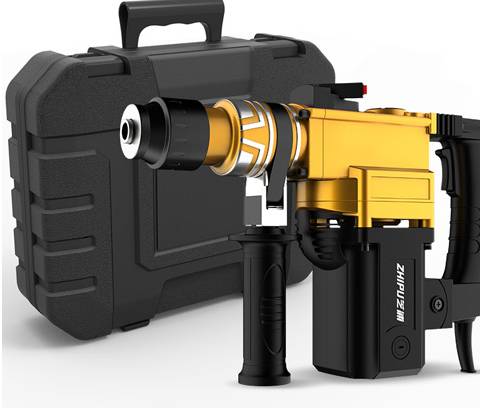loading...
- No. 9, Xingyuan South Street, Dongwaihuan Road, Zaoqiang County, Hengshui, Hebei, China
- admin@zjcomposites.com
- +86 15097380338
- Welcome to visit our website!
Innovative Design Ideas for Modern FRP Railing Solutions
The Benefits and Features of FRP Railing Systems
In recent years, the demand for innovative materials in construction and design has led to the increased popularity of Fiber Reinforced Polymer (FRP) railing systems. These railings offer a unique combination of strength, durability, and aesthetic appeal, making them an ideal choice for various applications, from residential balconies to commercial buildings and outdoor spaces. This article explores the benefits and features of FRP railing systems, highlighting why they are becoming a preferred option for builders and architects alike.
What is FRP?
Fiber Reinforced Polymer (FRP) is a composite material made by combining a polymer matrix with fibers, typically glass or carbon. This combination results in a material that boasts exceptional strength-to-weight ratios, corrosion resistance, and rigidity. Due to these properties, FRP has become increasingly popular in construction and engineering, particularly for applications where traditional materials may fall short.
Advantages of FRP Railing Systems
1. Corrosion Resistance One of the primary advantages of FRP railings is their resistance to corrosion. Unlike traditional materials such as steel, which can rust when exposed to moisture, FRP is impervious to water, chemicals, and UV radiation. This makes FRP railings an ideal choice for coastal areas or industrial environments where exposure to harsh conditions is common.
2. Lightweight yet Strong FRP railings are significantly lighter than their metal or wood counterparts while maintaining a high level of strength. This characteristic not only simplifies the installation process, reducing labor costs and time, but also minimizes the structural load on buildings and decks.
3. Maintenance-Free With FRP railings, property owners can enjoy a maintenance-free solution. Unlike wood, which may require regular staining or sealing, FRP does not need such treatments. Periodic cleaning with soap and water is typically sufficient to keep FRP rails looking new. As a result, the long-term maintenance costs are considerably lower than those associated with traditional railing materials.
4. Design Flexibility FRP railings are available in a wide range of colors, profiles, and designs, providing architects and homeowners with unparalleled flexibility in terms of aesthetics. The ability to create custom designs means that FRP railings can complement any architectural style, from modern to traditional, ensuring that they fit seamlessly within any environment.
5. Safety and Compliance Safety is a major consideration in railing design. FRP railings are manufactured to meet or exceed local building codes and safety standards. They can be engineered to offer the necessary load-bearing capacity, ensuring that they provide reliable safety for users. Additionally, many FRP railings feature slip-resistant surfaces, enhancing safety further, especially in wet conditions.
frp railing

6. Sustainability Today’s construction industry is increasingly focused on sustainability, and FRP materials align with these values. Many FRP products are made from recycled materials, and their long lifespan contributes to reduced waste. The durability of FRP means that replacing it is less frequent, resulting in fewer materials consumed over time.
Applications of FRP Railing Systems
The versatility of FRP railing systems makes them suitable for a variety of applications. They are commonly used in
- Commercial Buildings Shopping centers, office buildings, and public spaces often utilize FRP railings for both safety and aesthetic purposes. Their modern look can enhance the overall design of the building, attracting customers and visitors.
- Residential Properties Homeowners are increasingly choosing FRP railings for decks, balconies, and staircases. The low maintenance requirements and customizable designs make them an appealing choice for residential applications.
- Industrial Sites In environments such as factories or warehouses, FRP railings can withstand chemical exposure and high-stress conditions, providing safety and durability where it is most needed.
- Coastal Areas Communities located near the ocean benefit from FRP’s corrosion resistance, making these railings ideal for beachfront properties and piers.
Conclusion
In conclusion, the benefits of FRP railing systems, including their durability, low maintenance, and aesthetic flexibility, make them an excellent choice for a wide range of applications. As technology continues to advance, the use of FRP materials in construction and design is likely to grow, offering a sustainable and reliable solution for modern infrastructure needs. Whether for residential or commercial purposes, FRP railings stand out as a smart investment for the future of design and safety.
-
GRP Structures: The Future of Lightweight, High-Performance EngineeringNewsJun.20,2025
-
FRP Water Tank: High-Performance Storage for Corrosive and Clean Water SystemsNewsJun.20,2025
-
FRP Square Tube: The New Industry Standard for Chemical and Structural ApplicationsNewsJun.20,2025
-
FRP Pultruded Profiles: The Ultimate Choice for Lightweight Structural StrengthNewsJun.20,2025
-
FRP Handrails: The Safer, Smarter, and Stronger Choice for Modern InfrastructureNewsJun.20,2025
-
FRP Grating: The Smart Solution for Durable, Lightweight Industrial FlooringNewsJun.20,2025
-
Why Choose a Galvanized Water Tank for Your Storage NeedsNewsMay.21,2025
